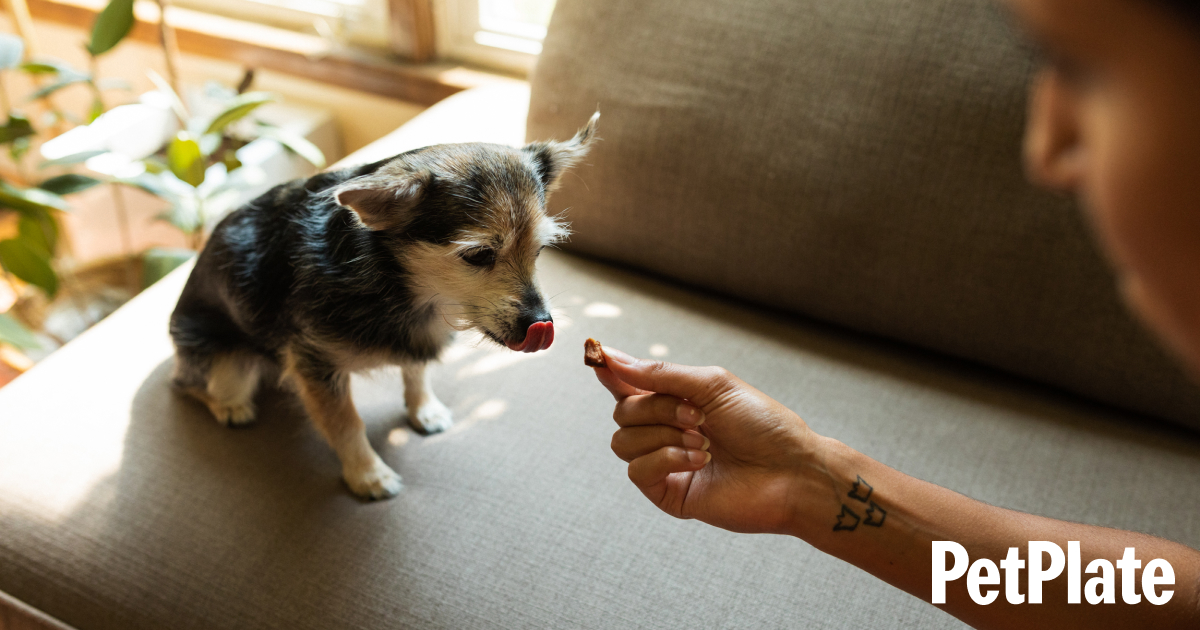
Can You Train an Older Dog? Your Guide to Training Older Dogs
Despite what you may have heard, a dog’s willingness to learn does not disappear with age. Older dogs still have a trick or two left up their sleeves, and if you challenge and engage them in a training routine, their eagerness to learn will shine through.
Do you have a beloved older dog you’d like to train? This guide will show you how to do it logically, methodically and effectively.
Is It Too Late to Train My Older Dog?
Age will only be an obstacle in training your dog if you allow it to be. A senior dog might take a bit longer to understand what you’re trying to accomplish since their habits will be more entrenched than those of a younger dog. But once they realize you’ve found an opportunity to spend lots of time with them, their cooperation is ensured!
“Dogs are social animals,” explains licensed trainer Fred Zorn. “They like to do what we’re doing. They like to be a part of the group.”
The bottom line is if you adopt the right approach, any dog of any age can learn.
“There are four elements that one must utilize,” says Zorn. “Trust, communication, clarity of intent and fun.”
Why is it Important to Train Your Senior Dog?
An aging dog will experience a certain amount of physical and cognitive decline. But the pace of the changes can be slowed if you challenge them physically and mentally with an entertaining dog training regimen. This will keep them thinking and moving daily, at a time in their life when they can readily slip into chronic inactivity if they aren’t encouraged to stay active.
Another reason to train a senior dog is to break them from any habits that, from your perspective, seem disruptive to the peace and stability of your household. Senior dogs are usually loving companions who like to stay close to their favorite humans at all times. Correcting their unpleasant behavioral patterns will give them a chance to do that.
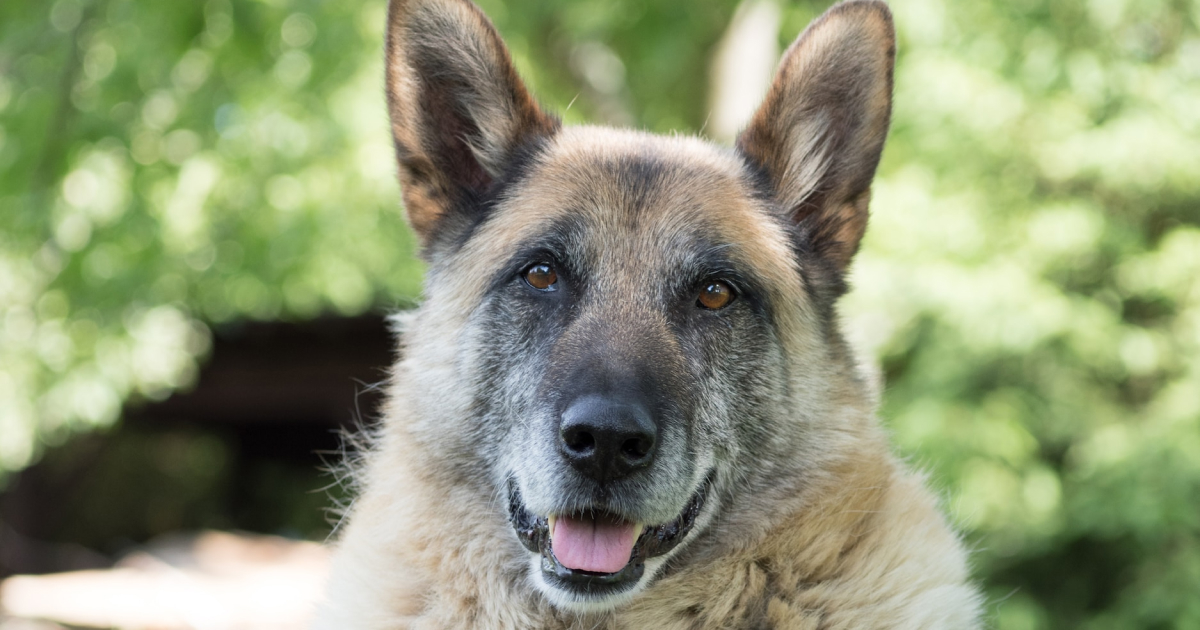
Tips for Training Older Dogs
To successfully train an older dog, you can’t do it haphazardly or spontaneously, with no organized action plan. Nor can you do it following a training template that you’ve used to train younger dogs in the past.
“Dogs can do incredible things when challenged, just like humans,” Zorn says. “But they’re also individuals, and you’ll need to customize your training approach for them.”
Recognize that you might need to “untrain” first
Throughout their lifetimes, older dogs can pick up lots of bad habits. This is especially true if they’ve had little or no training previously. So before you can begin teaching them what you want them to do, you’ll have to get them to stop doing what you don’t want them to do.
Suppose your dog barks excessively at everything that moves or chews on shoes or clothing. In that case, you’ll need to use positive reinforcement to get them to abandon these disturbing practices or, better yet, replace these habits with more constructive behaviors. When they heed your request to stay silent when someone walks by outside your window, or when they pick up an object and drop it at your feet instead of chewing on it, you should reward their good behavior with a combination of effusive praise and mouth-watering delicious treats. Since senior dogs are so savvy and experienced, they will eventually get the idea and begin behaving much better.
Keep it positive and be patient
Your senior dog will actively seek your love and approval. In the context of a training regimen, that means they will respond best to generous helpings of positive feedback for everything they get right. Conversely, they won’t know how to respond if you take a negative approach.
“If the only word you use is ‘no’ or ‘don’t’ or ‘stop,’ you’re not actually giving the dog direction for what TO do,” Zorn states.
You must display patience and an even temperament when they don’t get it right the first time, the second time, or even the tenth time. Because they want to please you, they will eventually figure things out, as long as you maintain a positive attitude that motivates their best efforts.
Break it down into smaller parts
Your senior dog can learn to follow simple commands. And if you string simple commands together, they can also accomplish more complex tasks or tricks.
Explaining this principle, Fred Zorn talks about creating what he calls a ‘chain event.’
“I tell the dog to sit, I give him a treat. I tell the dog to lie down, I give him a treat. I tell the dog to stand up on its hind legs, I give him a treat,” he says. “THEN, I tell the dog to lie down, sit down, and stand up on his hind legs, and then I give a treat. Now I’ve chained those three things together, so the dog also understands they have to follow through on each one of these things before the reward will happen.”
And just like that, real learning will take place.

Utilize a crate for house training
If you have a senior dog that’s stayed outside most of the time in the past, they may not be housebroken. To solve this problem, it’s crucial to establish a strict timetable for when your dog is to be fed and when they will be taken outside. Once they learn to anticipate bathroom breaks/outdoor walks, they will be more willing to wait, even if they haven’t developed this habit in the past.
Crate training can help you move past house training-related issues. Dogs don’t want to relieve themselves in the places where they sleep or retreat for peace and comfort, so any time they spend in a crate during the house-training process is time that you won’t have to worry about them relieving themselves indoors.
If and when they have “accidents,” it’s important to remain calm and not get upset or angry. A scolding won’t stop them from going to the bathroom indoors; it will only motivate them to search for more hidden places to do their business.
Stick to a schedule
You should take your dogs out for walks at the same times, feed them at the same times, exercise them at the same times, and train them at the same times (approximately) every single day. They will quickly adapt because they know what to expect and will be ready to learn when you want them to.
With training, you should always try to have more than one session in a day and make sure you don’t postpone or forget them. Consistency in both times and frequency can work wonders when attempting to train a senior dog.
Try an obedience class
Ideally, you’d like to do it all yourself. But it’s okay to ask for expert assistance if you’re struggling or feel overwhelmed by the responsibility.
Not only will your dog learn something from the experience, but you will too. After seeing an experienced trainer in action, you’ll know more about the techniques and methodologies that produce results.
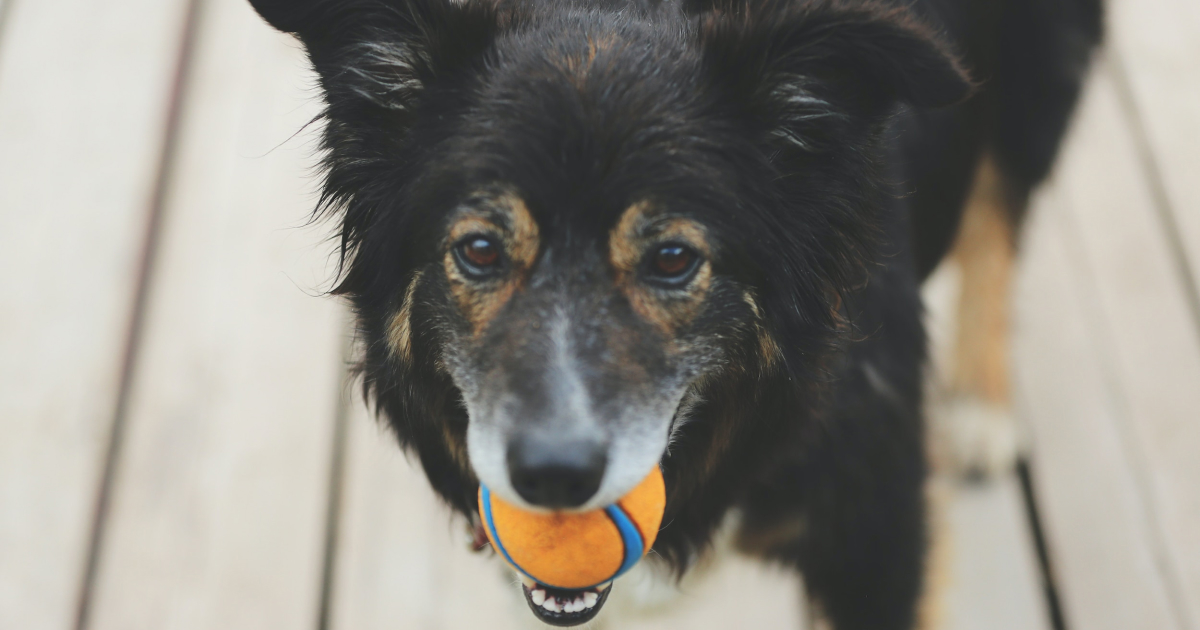
Teach them new tricks to keep it fun
While you may be satisfied with a few behavioral alterations, your dog will crave all the affection and praise you dished out during your training sessions. They will be ready and waiting for more. So you should teach them more tricks, continually adding to their repertoire while the bonds of love that connect you grow stronger. The learning process will also stimulate them mentally and physically. In truth, it will also stimulate you mentally and physically.
“Have fun with your dog every single day,” Zorn advises. “There’s a certain preciousness that you want to maintain with your dog. You want to make sure that every second that you have in this life with them is useful, contented and fulfilling.”
Senior dogs may have physical limitations that prevent them from jumping to catch frisbees or chasing rubber balls that bounce 100 feet away. Nevertheless, you can still teach them to:
- Speak
- Give a high five
- Shake hands
- Walk backward
- Turn in a circle
- Retrieve objects like their leash or your slippers
- Put away their dog toys
- Play small-area, non-stressful games of fetch
- Cover themselves with a blanket (or cover you with one)
This is just a sampling. If you’re clever and creative, the sky is truly the limit.
Give up on the idea of control
Your senior dog cannot be forced to learn. They have lived long enough to develop their own ideas about sensible or appropriate behavior, and they will only be willing to learn new behaviors if you convince them it’s a good idea.
“If you utilize the four tenets of trust, communication, clarity of intent and fun when training your dog, control happens,” Zorn explains. “But if you go for control first without having those four elements in place, there will be resistance. What you’re doing is creating a culture, a set of mores of how things are done in your family.
Your senior dog will want to be accepted into that family culture, and that desire—plus your kind and respectful approach—will keep them in permanent learning mode.
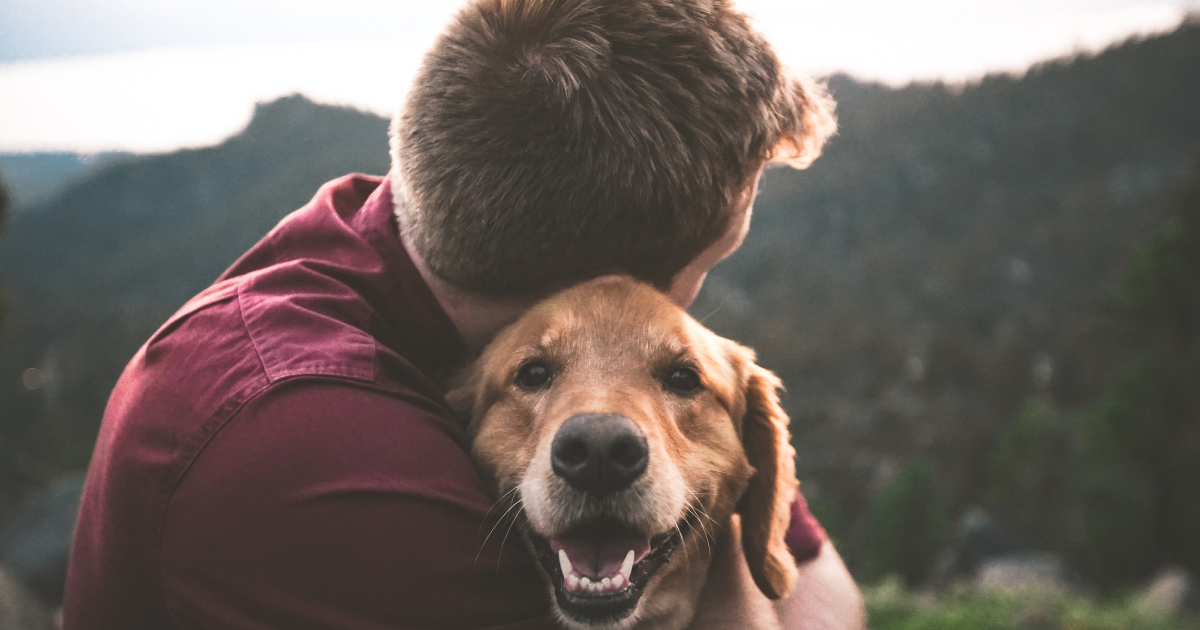
FAQs About Training Older Dogs
If you have an older dog that needs training, you likely have many questions about what such a process will entail. While we can’t anticipate all of those questions, here are a few that people ask quite often:
Can you crate train an older dog?
Dogs of any age can be taught to sleep in a crate. They must be comfortable enough to move around and sleep in it, and their food and water must also be available. A well-stocked crate is like a furnished doggy apartment; if you praise them and reward them for entering, they will see it as a place worthy of calling home. Over time, they’ll come to see their crate as a den, even asking to go in when they’re scared of thunder, fireworks or other scary noises, or if they just want to be left alone.
How to house train an older dog?
A firm and fixed schedule for outdoor walks is essential for a dog needing house training. You should praise them and give them treats when they go to the bathroom outside, but you shouldn’t scold them if they do it inside. Just remain patient and continue reinforcing the behavior you seek. Ultimately, they will alter their bathroom schedule to match your expectations.
How to leash train an older dog?
You must be extremely patient when leash training an older dog. To remedy uncontrolled pulling, you should stop immediately and refuse to move until they calm down and return to your side. Reward them generously with treats and kind words when they walk by your side voluntarily to make sure your preference is clear.
Is it too late to train my dog?
Age is never a reason to pass on trying to train a dog. Their potential to learn may decrease as they get older, but their desire to please their humans is something they will carry with them forever.
When is it too late to train a dog?
Age-related infirmities may interfere with a senior dog’s ability to learn (if they’re suffering from cognitive decline) or their capacity to perform (if they have arthritis, hearing loss, vision loss, etc.). In these situations, it may be too late to train them to do certain things, and any training activity that seems to cause them discomfort should be halted immediately.
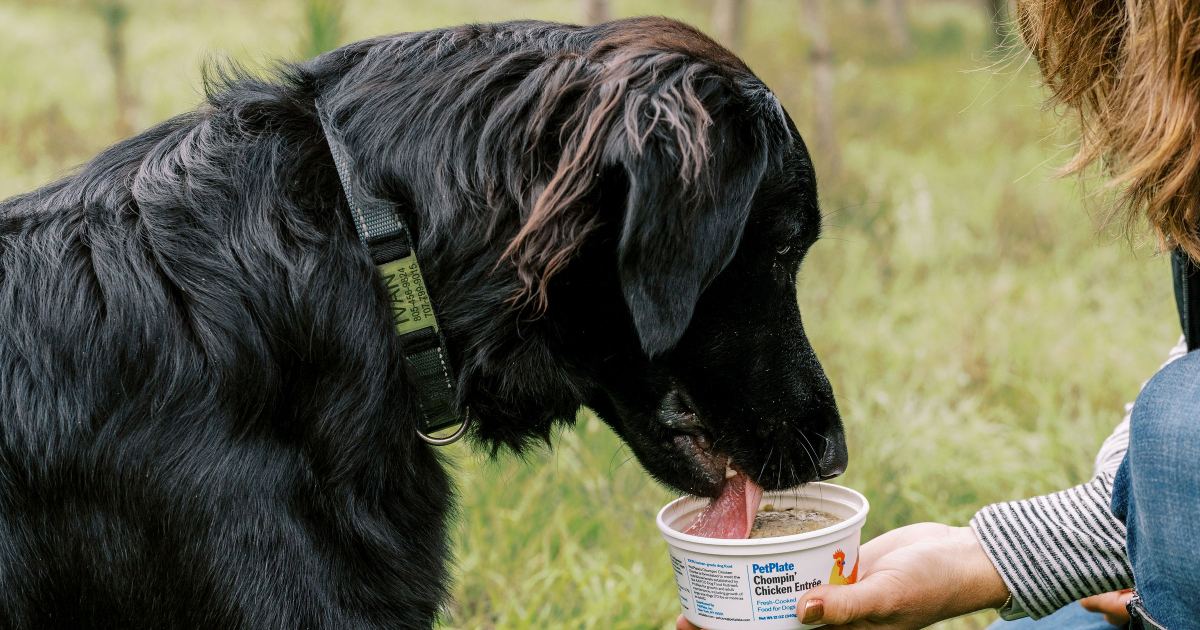
Help Train Your Older Dog with Treats for Senior Dogs
Dog training benefits your dog and you because it will help you build a better relationship with your senior companion.
“Dog training largely is about helping a dog fit into your life,” Zorn points out. When your training efforts are successful, all will enjoy a happier and more harmonious home environment.
If you want to guarantee success in this critical endeavor, you can improve your odds dramatically if you choose PetPlate’s specially formulated treats as training enticement. Once they realize their cooperation is being rewarded with delicious organic protein bites , your senior dog will enthusiastically embrace the training process. The result will be good behavior and even better health!
For more info about the benefits of adopting a senior dog, check out our blog!